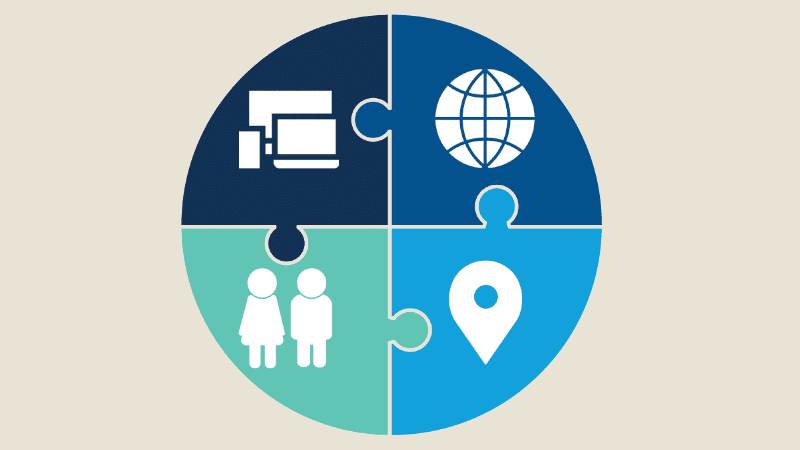Imagine buying a baby baby carriage and a pacifier on an online shopping platform.
You then receive in your mailbox a 50% promotion on a walker, a Costa Rican flag and a fishing rod. Sounds strange, doesn't it? It could happen without marketing segmentation. Thanks to marketing segmentation, the website will instead offer you a promotion on a baby bottle warmer and a baby monitor, or a discount in a store near you.
But what exactly is marketing segmentation? How do you apply this concept to your organization? What segmentation criteria should be used? Answers in this article.
💡Related articles:
What is marketing segmentation?
Marketing segmentation is simply the process of dividing a market into homogeneous groups of consumers with similar needs and buying behaviors.
This enables companies to create targeted offers and marketing strategies for each market segment more easily.
What’s more, marketing segmentation is now a means of personalizing the user’s experience with his or her company. Thanks to precise criteria, the organization is able to communicate the right words, the right offers, at the right time. All this increases customer satisfaction and value over time (Lifetime Value).
The different segmentation criteria used in marketing
Segmentation criteria are the characteristics that companies use to divide their market into segments. These criteria can be demographic, geographic, psychographic or behavioral. Let’s take a closer look at some concrete examples.
Demographic segmentation
Geographical segmentation

Psychographic segmentation
Behavioral segmentation
Key steps to successful marketing segmentation
You now know the segmentation criteria. To integrate them into your current strategy, the steps are based on analyzing your data, creating segments, applying your strategy and following up to capitalize on your segments.
Customer data analysis
To analyze your customer data, you can use several data sources:
- demographic data (place of delivery or store of purchase);
- purchase data via a loyalty card or a customer account ;
- behaviors on your website (using Tag Manager, for example) ;
- the satisfaction surveys.
This is where you can integrate data science into your marketing strategy. All sources of data are good for optimizing the next step.
Definition of relevant segments
The second step is to define the relevant segments. Here you need to identify market segments with similar needs. Make sure that each group is large enough to justify a specific marketing strategy.










